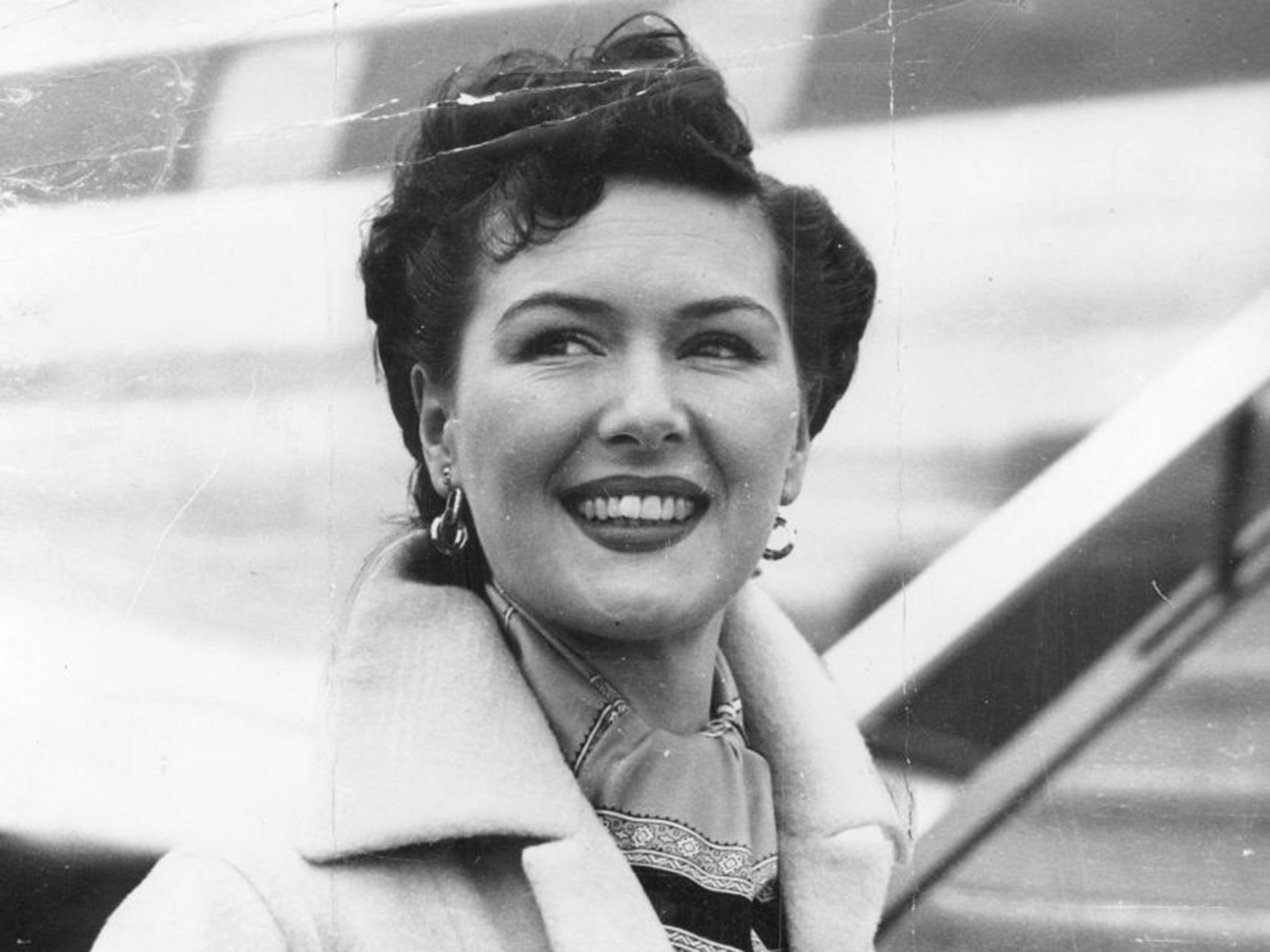Lady Wardington: Model turned down by BBC Television as ‘too beautiful’ who wrote the successful ‘Superhints’ series of books

Audrey White was from a humble background, but became a successful model and author, was turned down for a BBC announcer’s job for being deemed “too beautiful”, then established financial courses for women, worked for charities and became a lady of the aristocracy.
Born in Bradford in 1927, she was an only child. Her father, a commercial traveller, left when she was young and, following a move at the start of the Second World War, was brought up by her mother, Eva, in north London. She attended Henrietta Barnett School in Finchley and remembered enduring the Blitz with her cat, Luftwaffe, and later sheltering under her desk during the early doodlebug raids.
Leaving school at 16, she wanted to become a nurse but worked at the Elizabeth Arden cosmetics salon on Bond Street earning a guinea a day. She was spotted by a client, Phyllis Digby Morton, editor of Woman and Beauty, who invited her to be photographed for the magazine. Described by one admirer as “a raving beauty... with a smile as fresh as spring and the playful eye of a puppy,” she became one of the best known faces of the 1950s, appearing in countless advertisements. In a series of National Savings posters she appeared in full bridal regalia, having fulfilled the job requirement of someone “young, charming and unsophisticated”.
In 1951 it was reported that the BBC had turned her down as a stand-in television announcer for being “too sophisticated and severely beautiful...” and in case she “alarmed timid men from Wigan and country districts”. One commentator put it, “Could you watch Miss White talking about depressions over Iceland and absorb what she was saying?”
White had only applied for the job “as a lark”, she said, adding, “The pay is pretty poor, you know.” She picked up other television work, appeared in a handful of films and worked as an announcer on commercial radio. She was later the face of Dreft washing powder, claiming, “I always find time to give my nylons and undies that all-important nightly dip in Dreft.”
She dated the actors Jon Pertwee (a future Doctor Who) and Anthony Steele, then in 1953 married Jack Dunfee, a theatrical impresario and one of the 1930s “Bentley Boys” racing drivers. She had once remarked that her ideal man had to be tall, intelligent, about 10 years older and preferably connected with the arts; Dunfee was 26 years her senior.
The following year she became fashion editor of Housewife magazine, staying for six years before taking the same job at Go for two years. By this time her marriage had ended, and in 1964 she married Christopher Henry Beaumont “Bic” Pease, the second Lord Wardington, a partner at the stockbrokers Hoare Govett and a noted bibliophile. They moved into Wardington Manor, his medieval-Jacobean house near Banbury, and adopted three children.
Lady Wardington had never really had to worry about money, but when her husband suffered a heart attack she realised she was ignorant about financial matters. So she established a financial management course , Capital and Savings Handling (CASH), dealing with savings, pensions and the stock market and aimed at women. She believed her title added glamour and was partly why it ran successfully for eight years.
In 1991 she was back in the news with a series of books called Superhints. Wanting to raise money for a hospice in Banbury that was caring for a former secretary, she hit upon the idea of famous people offering everyday tips. She “simply wrote to about 3,000 people, asking them to donate a hint.” Her connections ensured some big names. The series included Superhints to cooking, gardening and, finally, life itself; the latter had tips from Richard Briers, Jane Fonda and Cliff Richard.
But with a high percentage of titled contributors, their “hints” were often rather less practical than they were revealing of their authors. The Marchioness of Northampton suggested using toothpaste to clean flies off the windscreen while Lady Cobbold recommended paper knickers because “it saves washing and they are good for lighting the fire”. Princess Margaret advised pouring white wine on to red spilt on the carpet, leaving it for five minutes before clearing up. Lady Dashwood claimed that in order to pacify an angry child one should “whisper gently into his ear and he will stop crying to hear what you are saying. This is also 100 per cent effective with husbands.”
Tragedy struck in 2004, while the Wardingtons were away, when the manor caught fire following an electrical fault in the attic. Fortunately, their daughter Helen and a human chain of villagers rescued the priceless collection of rare maps and atlases, including the earliest printed edition (1477 in Bologna) of Ptolemy’s atlas. Lord Wardington died the following year and Lady Wardington moved into a cottage in the village, from where she continued her charity work.
With the manor fully restored in 2013, she remarked, “the really maddening thing is that the kitchen was absolutely untouched. I would have liked a new kitchen.”
Margaret Audrey White, model, fashion editor, author and fund-raiser: born Bradford 2 November 1927; married 1953 Jack Dunfee (marriage dissolved), 1964 Christopher Pease, Lord Wardington (died 2005; two adopted daughters, one adopted son); died 8 November 2014.
Subscribe to Independent Premium to bookmark this article
Want to bookmark your favourite articles and stories to read or reference later? Start your Independent Premium subscription today.

Join our commenting forum
Join thought-provoking conversations, follow other Independent readers and see their replies